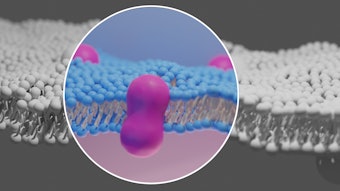
Awakening to the Concept
Awake liposuction is one of our most popular procedures, and demand is only increasing as time goes on. While the term “awake liposuction” is a bit vague, as it could potentially refer to twilight anesthesia since one is technically “awake” in this setting, the term practically applies to liposuction procedures performed without any form of intravenous or inhalational sedation. Success with awake liposuction is predicated on proper patient selection. In the right patient, awake liposuction can be a great alternative to twilight or general anesthesia. Choosing an awake approach for the wrong case can, however, lead to potentially dangerous situations or suboptimal aesthetic outcomes. We regularly perform awake liposuction for small treatment areas such as the chin, arms and flanks with great success.
Definitions of Anesthesia Variations
There is a great deal of confusion surrounding liposuction vocabulary, and this definitely applies to the kind of anesthesia used for these cases. There are essentially three forms of liposuction with respect to the kind of anesthesia used: awake, IV sedation (or “twilight”) and general anesthesia.
In awake liposuction, local anesthesia is used to numb the area being treated. This takes the form of a “tumescent solution” that is introduced to the treatment area through small entry points. Oral anxiolytics like Valium and pain medications like Tylenol are often used to provide additional comfort.
General anesthesia, on the other hand, refers to a state in which the patient is completely asleep and breathing with the assistance of a machine and has their airway protected with a tube, as they will not be conscious enough to protect their own airway.
“Twilight” anesthesia is a middle-ground between awake liposuction and general anesthesia. Twilight anesthesia makes use of IV medication to precisely titrate a patient’s level of wakefulness to ensure their comfort during the procedure. Patients breathe on their own during these procedures and typically drift in and out of sleep.
Appropriate Cases
Careful patient selection is critical to success with awake liposuction. The patient should be in good general health and free from underlying anxiety. If underlying anxiety is present, it should be well controlled. Patients that have a self-proclaimed “low pain tolerance” are also not ideal candidates for this approach, as even though these procedures are not very uncomfortable, patients tend to know their own limits, and we should listen to them. Additionally, awake liposuction is best suited to patients that are on the smaller side and want to treat one or two small areas of concern. Cases like this lend themselves to adequate pain control with safe levels of lidocaine.
Pain control is not only important with respect to patient comfort but also directly impacts the quality of the aesthetic results. Significant patient discomfort can limit the aggressiveness of the surgeon, and thereby lead to an inadequate volume of fat removal or even a premature end to the case before the entire area of concern can be treated.
Advantages
Awake liposuction offers several advantages over traditional liposuction performed under general anesthesia in properly selected patients. Awake liposuction mitigates some of the risks associated with general anesthesia. These risks include things like unfavorable reactions to the medications being used and blood clots in the legs that can travel to the lungs as pulmonary emboli. These are very rare events and must be balanced against the potential downsides of awake liposuction, discussed below.
Awake liposuction is generally less expensive than its traditional counterpart. This is because you avoid the costs involved with a general anesthetic or IV sedation, most notably the cost of an anesthesiologist. For cases better performed with general anesthesia or IV sedation, the cost of a board-certified anesthesiologist is well worth it.
Patients undergoing awake liposuction often experience a more rapid recovery in the immediate postoperative period, as they do not need to wait for the effects of IV or inhalational anesthetic agents to wear off. The absence of these medications is also typically associated with less postoperative nausea and vomiting. Patients can often leave the surgery center on their own after liposuction with local anesthesia. This is not the case for patients undergoing traditional liposuction.
Disadvantages
Local anesthesia liposuction has gained popularity due to its potentially lower cost and perceived safety in comparison to traditional liposuction performed under general anesthesia. However, it is not the right choice for every patient, and it is not safe for all procedures.
First, local anesthesia liposuction relies on lidocaine in the tumescent solution to keep the patient comfortable. While this is reasonable for smaller cases when multiple or high-volume areas are involved, the safe dose of lidocaine may be exceeded, meaning pain cannot be effectively controlled. Therefore, the area that can be effectively treated with local liposuction is limited. Awake liposuction may also be uncomfortable if it is not performed with excellent technique.
Performing liposuction awake also requires paying close attention to the patient’s anxiety level. While in properly selected patients, anxiety surrounding the procedure can be very effectively managed, this is not something we need to consider with twilight or general anesthesia. In some instances, the case may take longer under local anesthesia to ensure maximal patient comfort.
Parting Thoughts
For the right patient, awake liposuction can be a wonderful way to achieve one’s aesthetic goals without the downtime of major surgery. This is one of the most common procedures we perform, and I enthusiastically stand by the value of this procedure. Success can vary widely, however, based on surgeon experience and patient selection. When these variables are optimized, awake liposuction is a gratifying procedure to perform that achieves high levels of patient satisfaction.
--
Darren Smith, M.D., FACS is a board-certified plastic surgeon practicing in New York City. He is a known expert in aesthetic surgery and cosmetic injectable treatments.











